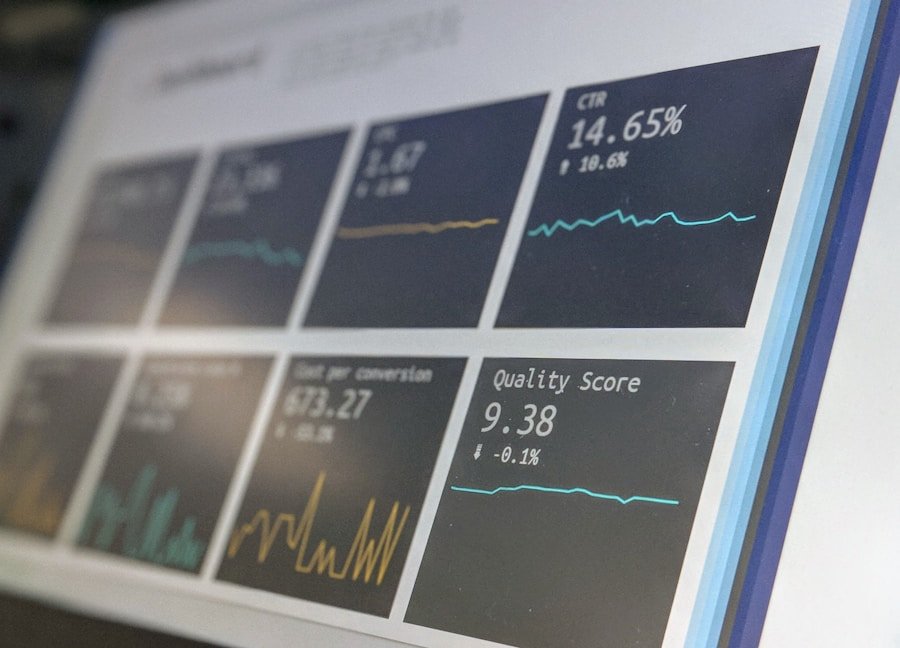Networking port scanning is a vital component of proactive security measures for any organization. This process involves scanning a network to identify open ports and services running on those ports, providing essential insights into potential vulnerabilities within the network. By conducting regular port scans, organizations can take proactive steps to address these vulnerabilities before they can be exploited by malicious actors, thereby minimizing the risk of security breaches and data losses.
Regular port scanning enables organizations to adopt a proactive approach to security, identifying and addressing potential vulnerabilities before they can be exploited. This proactive approach can help prevent data breaches, network intrusions, and other security incidents that can significantly impact an organization’s operations and reputation. Furthermore, port scanning also helps organizations ensure compliance with industry regulations and standards, such as the Payment Card Industry Data Security Standard (PCI DSS) and the Health Insurance Portability and Accountability Act (HIPAA), which mandate the maintenance of a secure network infrastructure.
Key Takeaways
- Networking port scanning is a proactive security measure that helps identify potential vulnerabilities in a network.
- The best networking port scanning tools should have features such as customizable scanning options, reporting capabilities, and integration with other security tools.
- Comparison of the best networking port scanning tools can help in making an informed decision based on factors like accuracy, speed, and ease of use.
- Implementing networking port scanning in your security strategy requires best practices such as regular scanning, prioritizing critical vulnerabilities, and collaboration with IT and security teams.
- Networking port scanning plays a crucial role in vulnerability management by identifying and prioritizing potential security risks in a network.
Top Features to Look for in Networking Port Scanning Tools
Comprehensive Scanning Capabilities
The chosen tool should offer comprehensive scanning capabilities, including the ability to scan both TCP and UDP ports. This is crucial for gaining a complete understanding of the network’s security posture and identifying potential vulnerabilities.
Customization and Reporting
The tool should provide customizable scanning options, allowing organizations to tailor their scans to meet their specific security needs and requirements. Additionally, it should generate detailed reports and analysis of scan results, providing valuable insights into the network infrastructure and identifying potential security risks.
Real-time Monitoring and Scalability
The tool should offer real-time monitoring capabilities, enabling organizations to continuously monitor their network for changes in port status or new vulnerabilities. Furthermore, it’s essential to consider the scalability and ease of use of the tool, ensuring it can accommodate current and future security needs without requiring extensive training or resources to implement and maintain.
Comparison of the Best Networking Port Scanning Tools
There are several networking port scanning tools available on the market, each offering its own unique features and capabilities. One of the most popular tools is Nmap, which is known for its comprehensive scanning capabilities and customizable options. Nmap offers support for both TCP and UDP port scanning, as well as the ability to generate detailed reports and analysis of scan results.
Additionally, Nmap is highly scalable and can be easily integrated into existing security infrastructure, making it a popular choice for organizations of all sizes. Another popular networking port scanning tool is Angry IP Scanner, which is known for its user-friendly interface and real-time monitoring capabilities. Angry IP Scanner offers support for both IPv4 and IPv6 addresses, as well as the ability to customize scan settings and generate detailed reports of scan results.
Additionally, Angry IP Scanner is highly scalable and can be easily integrated into existing security infrastructure, making it a popular choice for organizations looking for a simple yet effective port scanning solution.
How to Use Networking Port Scanning Tools for Proactive Security Measures
| Port Scanning Tool | Features | Supported Platforms | Price |
|---|---|---|---|
| Nmap | Powerful scanning capabilities, scriptable interaction, open-source | Windows, Linux, macOS | Free |
| Angry IP Scanner | Fast and friendly network scanner, cross-platform | Windows, Linux, macOS | Free |
| Masscan | High-speed scanning, asynchronous transmission | Linux | Free |
| Zenmap | Graphical user interface for Nmap, easy to use | Windows, Linux, macOS | Free |
Using networking port scanning tools for proactive security measures involves several key steps. Firstly, organizations should conduct regular port scans of their network infrastructure to identify any potential vulnerabilities or security risks. This involves using a networking port scanning tool to scan both TCP and UDP ports, as well as generating detailed reports and analysis of scan results.
By conducting regular port scans, organizations can gain valuable insights into their network’s security posture and take proactive steps to address any potential vulnerabilities before they can be exploited by malicious actors. Additionally, organizations should also consider using networking port scanning tools for real-time monitoring of their network infrastructure. This involves continuously monitoring the status of open ports and services running on those ports, as well as identifying any changes or new vulnerabilities that may arise.
By using networking port scanning tools for real-time monitoring, organizations can ensure that they are taking proactive steps to secure their network infrastructure and protect against potential security threats.
Best Practices for Implementing Networking Port Scanning in Your Security Strategy
When implementing networking port scanning in your security strategy, there are several best practices that organizations should consider. Firstly, it’s important to conduct regular port scans of your network infrastructure to identify any potential vulnerabilities or security risks. This involves using a networking port scanning tool to scan both TCP and UDP ports, as well as generating detailed reports and analysis of scan results.
By conducting regular port scans, organizations can gain valuable insights into their network’s security posture and take proactive steps to address any potential vulnerabilities before they can be exploited by malicious actors. Additionally, organizations should also consider using networking port scanning tools for real-time monitoring of their network infrastructure. This involves continuously monitoring the status of open ports and services running on those ports, as well as identifying any changes or new vulnerabilities that may arise.
By using networking port scanning tools for real-time monitoring, organizations can ensure that they are taking proactive steps to secure their network infrastructure and protect against potential security threats.
The Role of Networking Port Scanning in Vulnerability Management
Identifying Potential Vulnerabilities
By conducting regular port scans, organizations can identify potential vulnerabilities or security risks within their network infrastructure. This allows them to take proactive steps to secure their network infrastructure and protect against potential security threats.
Prioritizing Vulnerability Management Efforts
Networking port scanning also helps organizations to prioritize their vulnerability management efforts by identifying the most critical vulnerabilities within their network infrastructure. By generating detailed reports of scan results, organizations can gain valuable insights into the severity of potential vulnerabilities and prioritize their efforts to address them accordingly.
Optimizing Resource Allocation
By focusing on the most critical vulnerabilities, organizations can ensure that they are allocating their resources effectively to address the most pressing security risks. This enables them to protect their network infrastructure from potential security threats and maintain a robust security posture.
Future Trends in Networking Port Scanning Tools for Enhanced Security Measures
Looking ahead, there are several future trends in networking port scanning tools that are expected to enhance security measures for organizations. One of the key trends is the integration of artificial intelligence (AI) and machine learning (ML) capabilities into networking port scanning tools. This can help organizations to automate the process of identifying potential vulnerabilities within their network infrastructure and take proactive steps to address them before they can be exploited by malicious actors.
Additionally, there is also a growing trend towards the integration of cloud-based networking port scanning tools, which can offer greater scalability and flexibility for organizations looking to secure their network infrastructure. Cloud-based networking port scanning tools can offer greater accessibility and ease of use for organizations, as well as the ability to scale their security efforts according to their specific needs and requirements. In conclusion, networking port scanning is a crucial aspect of proactive security measures for any organization.
By understanding the importance of networking port scanning, considering the top features to look for in networking port scanning tools, comparing the best networking port scanning tools available on the market, learning how to use networking port scanning tools for proactive security measures, implementing best practices for networking port scanning in your security strategy, understanding the role of networking port scanning in vulnerability management, and considering future trends in networking port scanning tools for enhanced security measures, organizations can ensure that they are taking proactive steps to secure their network infrastructure and protect against potential security threats. With the right networking port scanning tools and strategies in place, organizations can gain valuable insights into their network’s security posture and take proactive steps to address any potential vulnerabilities before they can be exploited by malicious actors.
FAQs
What is port scanning?
Port scanning is the process of sending data packets to a computer or server to identify which ports are open and what services are running on those ports. This is commonly used by network administrators and security professionals to assess the security of a network.
Why is port scanning important for proactive security measures?
Port scanning is important for proactive security measures because it helps identify potential vulnerabilities in a network. By understanding which ports are open and what services are running, organizations can take proactive steps to secure their network and prevent unauthorized access.
What are some popular networking port scanning tools?
Some popular networking port scanning tools include Nmap, Angry IP Scanner, Advanced Port Scanner, and SolarWinds Port Scanner. These tools offer a range of features such as port discovery, service identification, and vulnerability assessment.
How do networking port scanning tools help in proactive security measures?
Networking port scanning tools help in proactive security measures by providing insights into the network’s security posture. They can identify open ports, services running on those ports, and potential vulnerabilities, allowing organizations to take proactive steps to secure their network and prevent potential security breaches.












